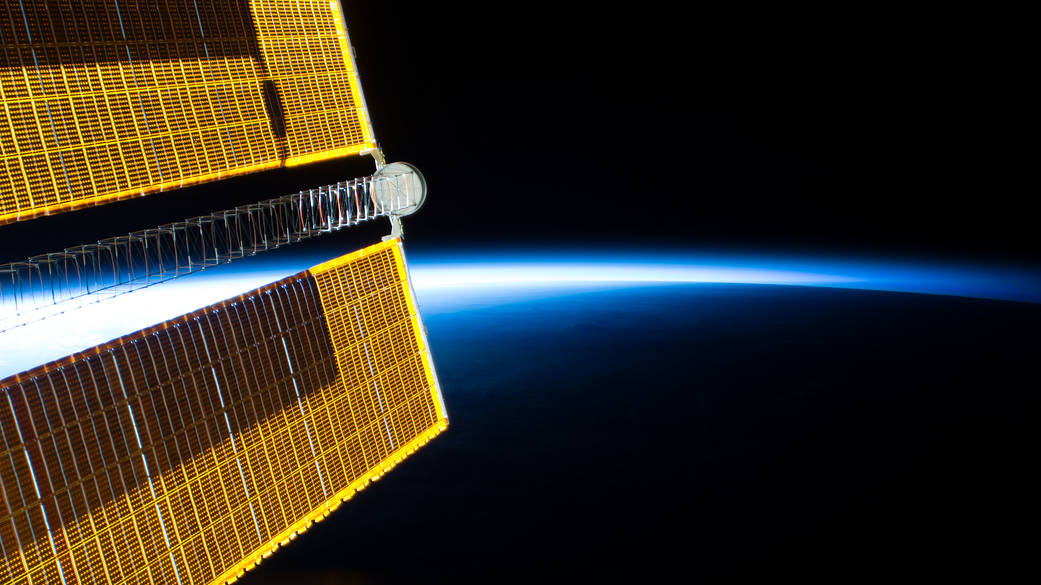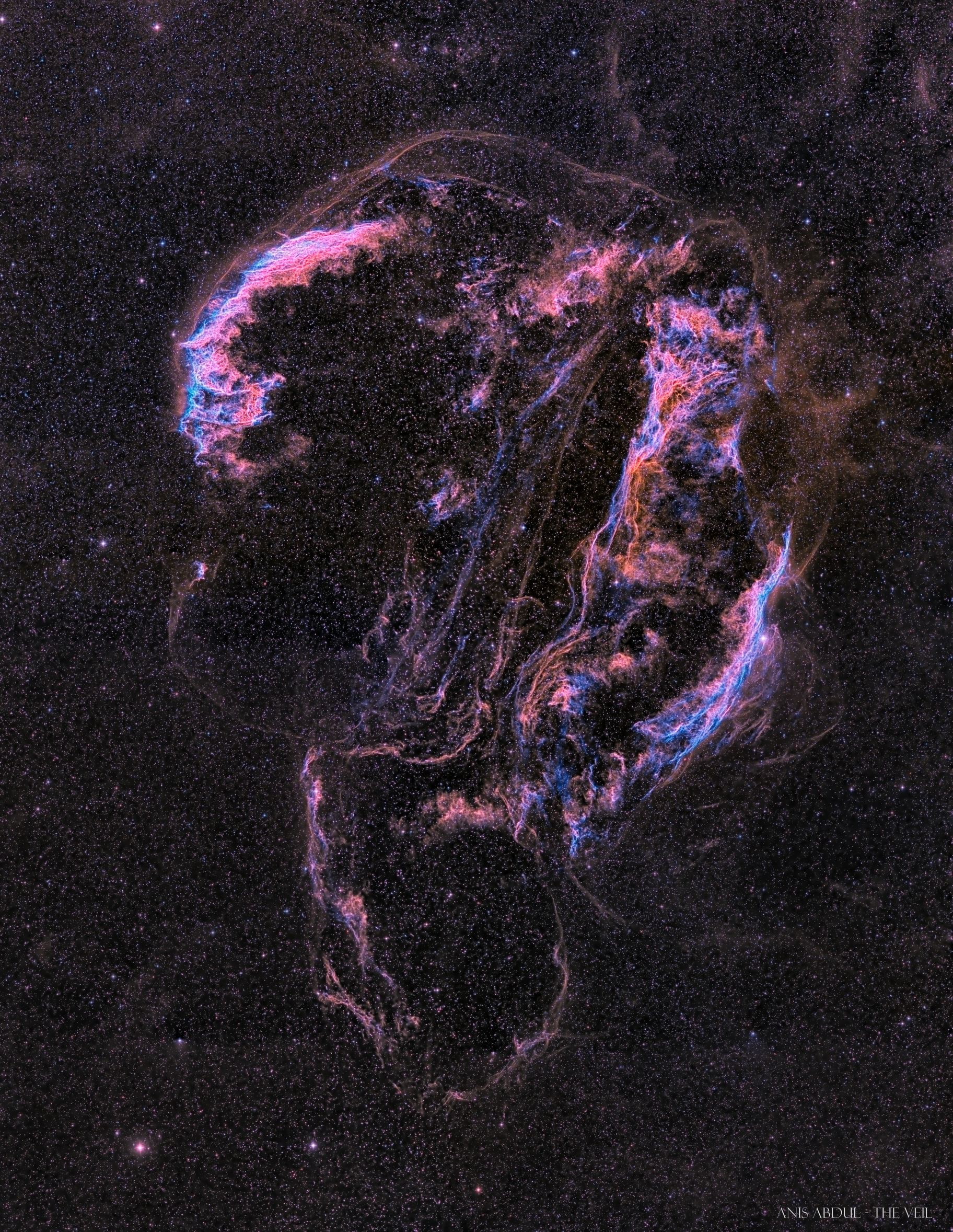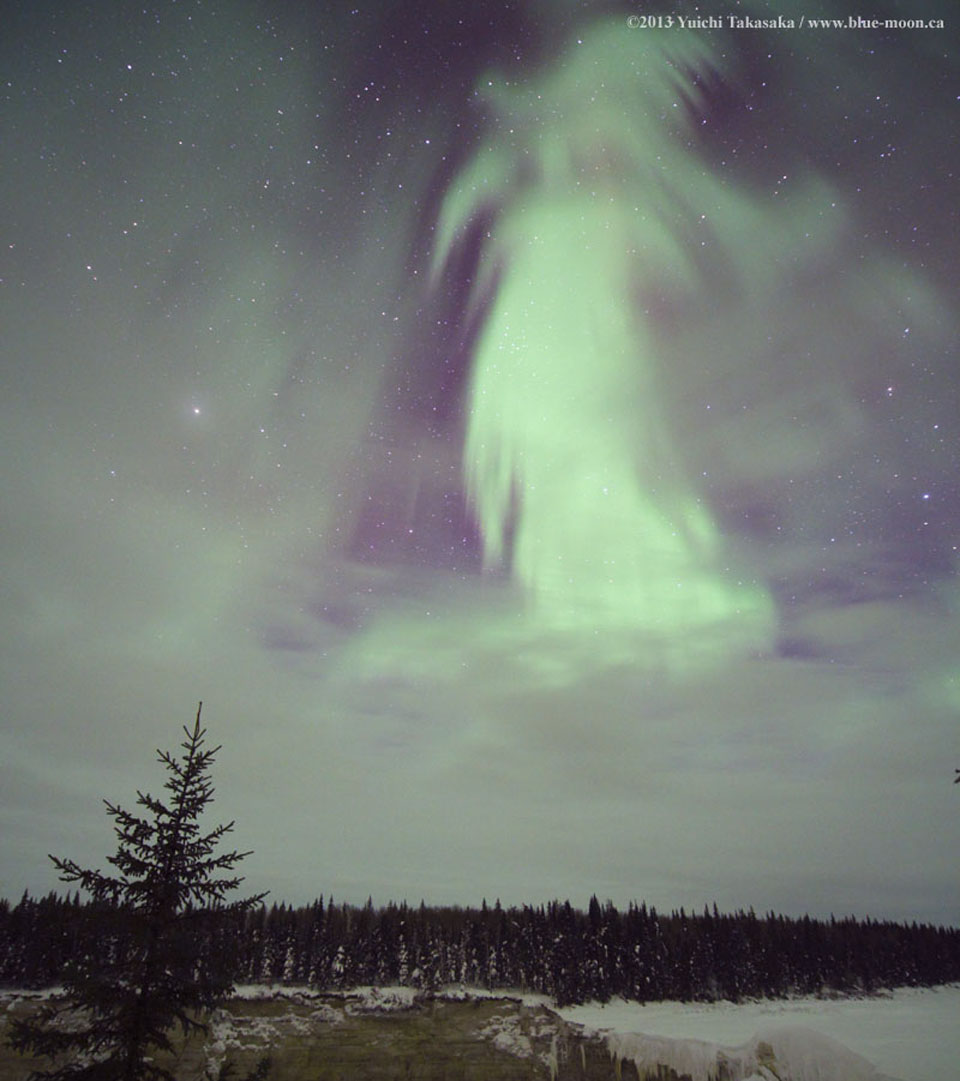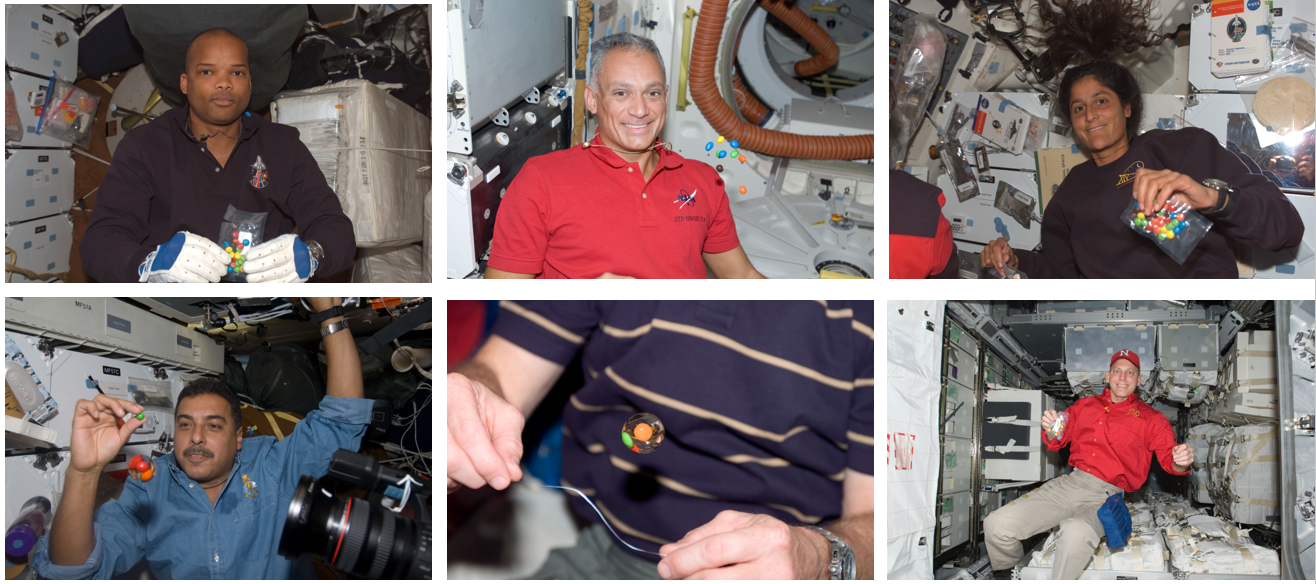Autumn Brings Multiple Treats: Halloween and the NASA SpaceX Crew-1 Launch
Halloween is approaching, and the NASA SpaceX Crew-1 launch isn’t far behind. In honor of all things eerie and space, we have compiled some sweet math problems, unearthly sounds, and some interesting facts to help you gear up for Crew-1 and get you through the spookiest day of the year!
Treat yourself and your family to a sweet math problem
If the International Space Station orbits at approximately 260 miles above the surface of Earth, and a regular-sized Snickers bar averages at 3.75 inches long, how many candy bars will it take to reach the space station?
[Answer below.]

View of Earth from the International Space Station. Credits: NASA
Want to crunch some more nougat-y numbers?
A fun-sized Snickers bar is about 1.8 inches long, and a giant Snickers bar is 9.646 inches long. What is the difference between the number of giant and regular Snickers bars needed to reach the space station? What is the difference between the number of fun-sized and regular Snickers bars needed to reach the space station?
[Answer below.]
Stellar costume stats
Stellar costumes such as Baby Yoda and Buzz Lightyear rank at #47 and #88 nationally in Google Trend’s 2020 Frightgeist.
In Houston, astronaut comes in at #5, with a banana slipping to the front of the line at #1. Are you interested in what the ranks are for other galactic Halloween costumes? You can access the list here.
Space Arachnids! A spooky tale? No. A study of spiders in space? Yes!
In 2011, NASA launched two golden orb (Nephila clavipes) spiders in space to study if they would spin their webs differently in microgravity. Golden orb spiders spin 3D, asymmetric webs on Earth. The crew observed that the spiders spin more circular webs in microgravity. They also noticed that the spiders consumed their webs daily. Eating their own webs gives the spiders the protein needed for them to spin new webs each day.
Video of Golden Orb Spider (Esmerelda) capturing a fruit fly in space. Credits: NASA
Trick (or treat) yourself to four delightfully eerie images from the Astronomy Picture of the Day archive:
Oct. 31, 2019: The Ghostly Veil Nebula

Credits: Anis Abdul
Oct. 31, 2018: R Leporis: A Vampire’s Star

Credits: Martin Pugh
Oct. 31, 2017: Dark Matter in a Simulated Universe

Illustration Credits: Tom Abel & Ralf Kaehler (KIPAC, SLAC), AMNH
Oct. 31, 2016: Ghost Aurora over Canada

Credits: Yuichi Takasaka, TWAN
If your candy is floating, sometimes it isn’t ghosts

Credits: NASA
Propelling into space
Crew-1 will be launching into space on the SpaceX Falcon 9 vehicle. The Falcon 9 uses liquid oxygen (LOX) and refined petroleum-1 (RP-1) each launch. RP-1 is the fuel (something to burn), and LOX is the oxidizer (makes the fuel burn). Combined, they make propellant.
The Falcon-9 has 10 engines for launching into space. Nine Merlin engines are used during the first stage of launch. After main engine cutoff, the single Merlin vacuum engine ignites in the second stage and brings the Falcon 9 and Dragon into low-Earth orbit.
Pumpkins and gourds are typically the go-to during autumn. However, word from space says that this time … it’s all about radishes.
The International Space Station’s Vegetable Production System, commonly known as Veggie, has successfully produced a variety of plants: three different types of lettuce, Chinese cabbage, and red Russian kale, to name a few. The SpaceX Crew-1 astronauts will be adding radishes to this list.
Radishes are genetically like Arabidopsis — a plant that is frequently studied in microgravity. Both belong to the Brassicaceae family, otherwise known as the mustard family. For more information on Veggie, you can access the NASA fact sheet here.

NASA astronaut Joe Acaba prepares the Veggie facility for three different kinds of lettuce seeds as part of the VEG-03-D investigation. Credits: NASA
How long would it take to walk around the SpaceX Falcon 9?
The SpaceX Falcon 9 vehicle is 229.6 feet long. It takes less time to walk around the rocket than you might think! According to the Centers for Disease Control (CDC), a moderate walking pace clocks in at 3 mph. If walking at this pace, it would take you approximately two minutes to walk around the rocket.
The real question is, how long would it take to do this … while being chased by a gigantic spider?
The CDC classifies running as moving at speeds greater than 5 mph. If you are running at 8 mph, it would take you approximately 40 seconds to circle the Falcon 9.
Of course, in the event of oversized spiders this Halloween, the hope is that you won’t be circling the vehicle, but that you will be running for the door (at speeds greater than 8 mph).
Space sounds for your spooky home atmosphere
Juno: Crossing Jupiter’s Bow Shock
Sounds like tropical wildlife … but maybe not the kind you would want to surround you in a forest.
Beware of Jupiter’s Largest Moon Ganymede
Imagine you jolted awake to the sounds of a warbled radio skipping through the stations.
Cassini: Saturn Radio Emissions #1
Something is coming and, from the sounds of it, it isn’t happy.
Plasmaspheric Hiss
Do you hear that breathing sound? It’s not you? It isn’t me.
Radar Echoes from Titan’s Surface
It resembles a tell-tale heartbeat with a dash of electronic voice phenomenon.
Answers:
· Sweet Math Problem:
- Approximately 4,392,960 regular Snickers bars to reach the space station.
· Nougat-y Numbers – Part A:
- Approximately 2,690,690 more regular Snickers bars to reach the space station than giant-sized bars.
· Nougat-y Numbers – Part B:
- Approximately 4,763,720 more fun-sized Snickers bars to reach the space station than regular-sized bars.







